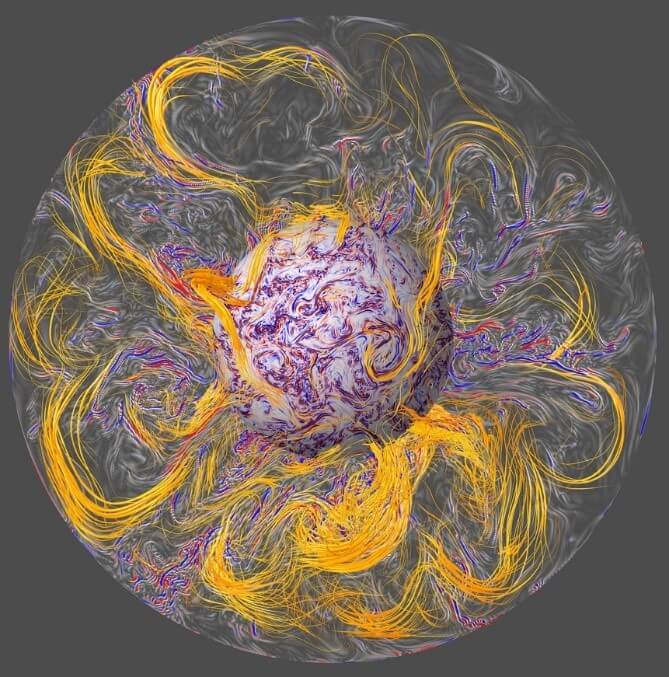The geomagnetic jerks originally described in 1978 are unpredictable events that dramatically accelerate the evolution of the Earth’s magnetic field and distort predictions of its behavior on a multi-year scale. The geomagnetic field affects numerous human activities, ranging from determining geolocation in smartphones and ending with the flight of satellites at low altitudes, so it is so important to accurately track its changes. However, geomagnetic jerks have been a problem for geophysicists for over forty years.
The magnetic field of the Earth is created due to the circulation of a substance in its metallic core due to the energy released during its cooling. Researchers are aware of two types of movements that cause changes in the magnetic field: those that arise as a result of slow convection movement, which can be measured at the scale of a century, and those that occur as a result of “fast” hydromagnetic waves, which can be detected at several years. Scientists suspected that the latter play a role in geomagnetic jerks, but the interaction of these waves with slow convection, along with their mechanism of propagation and amplification, has not yet been established.
To solve this riddle, Julien Aubert from the Paris Institute of Physics of the Earth (France), together with his colleague from the Technical University of Denmark, developed a computer simulation very close to the physical conditions of the core of our planet. The simulation turned out to be equivalent to 4 million hours of computation and was performed only thanks to GENCI supercomputers.
The researchers reproduced a sequence of events leading to geomagnetic jerks that arose in the simulation of hydromagnetic waves emitted in the inner core. These waves are focused and amplified as they approach the surface of the nucleus, causing magnetic perturbations that are comparable in all respects with the observed jerks.
Thus, digital reproduction and understanding of geomagnetic jerks paves the way for better prediction of the behavior of the Earth’s magnetic field. In addition, identifying the cause of changes in the magnetosphere also helps geophysicists to study the physical properties of the core and inner mantle of our planet.
Geomagnetic jerks – the mystery of the Earth's magnetic field has been solved
Click To Tweet
The post Geomagnetic jerks – the mystery of the Earth’s magnetic field has been solved appeared first on Upcosmos.com.
